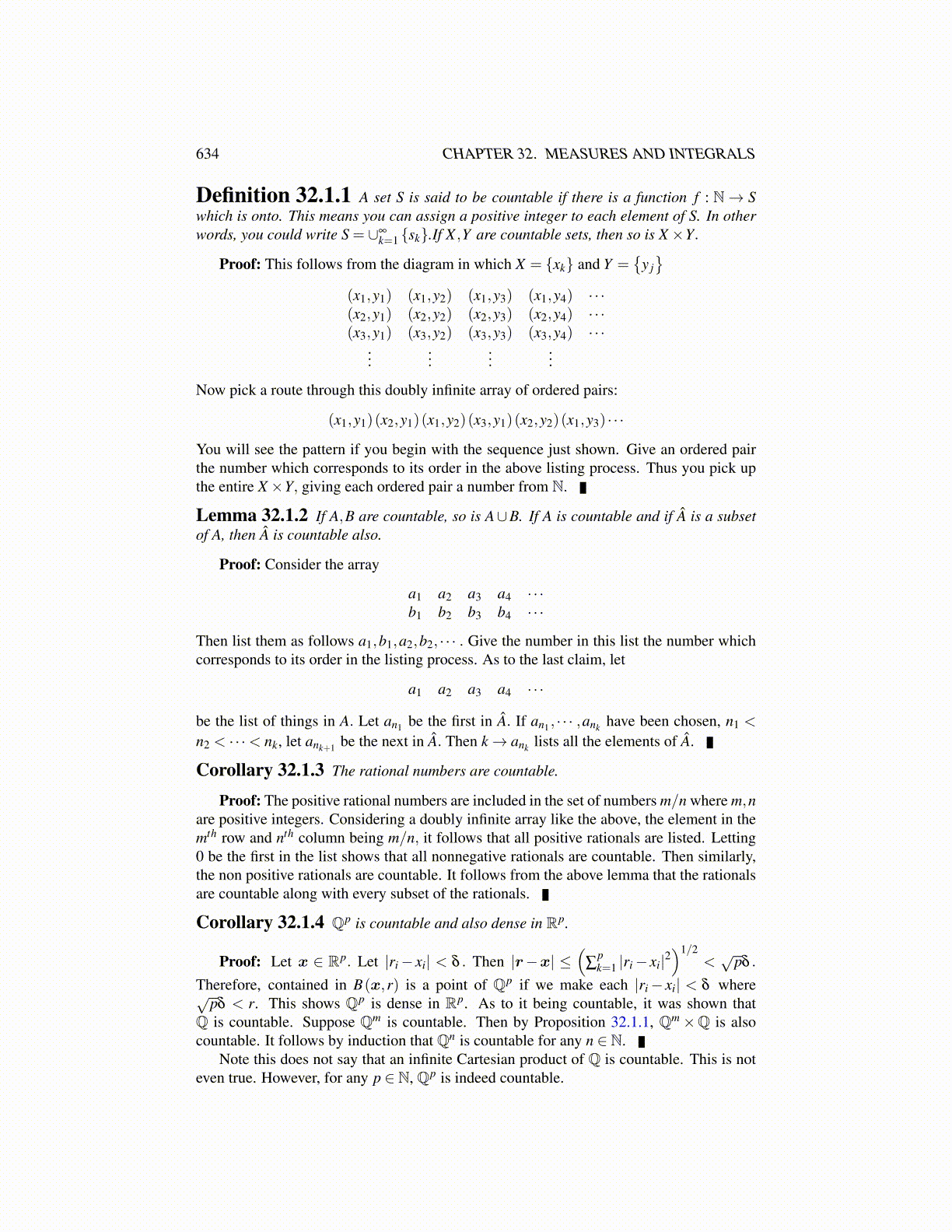
634 CHAPTER 32. MEASURES AND INTEGRALS
Proof: Let G1 = F1 and if G1, · · · ,Gn have been chosen disjoint, let
Gn+1 ≡ Fn+1 \∪ni=1Gi
Thus the Gi are disjoint. In addition, these are all measurable sets. Now
µ (Gn+1)+µ (Fn+1 ∩ (∪ni=1Gi)) = µ (Fn+1)
and so µ (Gn)≤ µ (Fn). Therefore,
µ (∪∞i=1Gi) = µ (∪∞
i=1Fi) = ∑i
µ (Gi)≤ ∑i
µ (Fi) .
Now consider the increasing sequence of Fn ∈ F . If F ⊆ G and these are sets of F
µ (G) = µ (F)+µ (G\F)
so µ (G)≥ µ (F). AlsoF = ∪∞
i=1 (Fi+1 \Fi)+F1
Then
µ (F) =∞
∑i=1
µ (Fi+1 \Fi)+µ (F1)
Now µ (Fi+1 \Fi)+µ (Fi) = µ (Fi+1). If any µ (Fi) = ∞, there is nothing to prove. Assumethen that these are all finite. Then
µ (Fi+1 \Fi) = µ (Fi+1)−µ (Fi)
and so
µ (F) =∞
∑i=1
µ (Fi+1)−µ (Fi)+µ (F1)
= limn→∞
n
∑i=1
µ (Fi+1)−µ (Fi)+µ (F1) = limn→∞
µ (Fn+1)
Next suppose µ (F1)< ∞ and {Fn} is a decreasing sequence. Then
F1 \Fn
is increasing to F1 \F and so by the first part,
µ (F1)−µ (F) = µ (F1 \F) = limn→∞
µ (F1 \Fn) = limn→∞
(µ (F1)−µ (Fn))
This is justified because µ (F1 \Fn)+µ (Fn) = µ (F1) and all numbers are finite by assump-tion. Hence
µ (F) = limn→∞
µ (Fn) .
Next is a discussion of the notion of a measurable function.
Notation 32.2.4 In whatever context, f−1 (S) ≡ {ω : f (ω) ∈ S}. It is called the inverseimage of S and everything in the theory of the Lebesgue integral is formulated in terms ofinverse images. For a real valued f , f−1 (λ ,∞) may be written as [ f > λ ].